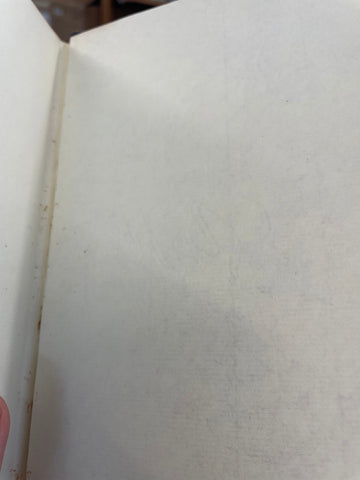Calling book historians!! Does anyone have any insights on the story of this book’s (re)binding and how on earth this marbled (?!) paper was created.
Those of you who’ve attended a workshop with me will have seen a few of my beloved fine bindings from the 19th century - I am a unapologetic hoarder of old books with beautiful marbled papers (yes, I judge books by their covers *hiding face emoji*) and this is the newest one in my collection!


The text is a fantastic publication from 1884 called ‘Humour, Wit & Satire of the Seventeenth Century’ by John Ashton. The pages are original and there is some evidence they were stained red. But it’s clear that the book has been rebound much later, using newer leather and, of particular interest to me, beautiful red and green marbled paper on the cover and endpapers.
This paper is really baffling me!! It looks marbled, but it doesn’t look quite like any marbling I’ve seen that’s done using the Turkish tradition of thickened water with watercolours/gouache/acrylics. The blobs are interestingly shaped for one thing - the ones clustered together almost look like bubbles stuck together, and there are areas where the green blob overlaps the red veins, which is pretty much impossible in Turkish style marbling unless you overmarble (and this paper hasn't been).
And there are areas where the green and red seem to almost blend together on the surface, which is again not a feature of Turkish marbling at all!!


So what’s going on here??! My best guess is that they were made using oil paints, maybe on a thickened water (but maybe not) and the paint was thick enough that the blobs kind of overlapped and blended in this curious way.
So the next question is when was this paper made? My wild guess is maybe the 60s or 70s due to the wonderful condition of the leather... but there is no label indicating the binder and the style is so classic that I just have no idea...


I just keep staring at it scratching my head! Anyone have any ideas? Or recognise the style of marbling at all?
